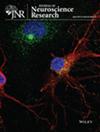Dynamic Temporal Alterations of the Cerebellum in Parkinson's Disease With Different Dominant-Affected Sides
Abstract
Laterality of motor deficits is a hallmark of Parkinson's disease (PD), which is strongly correlated with disease progression. The cerebellum is an important node in the motor-related network in PD. However, the role of the cerebellum in PD lateralization remains unclear. This study enrolled 48 left-dominant-affected PD patients (LPD), 60 right-dominant-affected PD patients (RPD) and 92 age- and sex-matched healthy controls (HCs). We utilized dynamic functional connectivity and co-activation pattern analysis to investigate dynamic alterations of the cerebellum between PD patients and HCs by resting-state fMRI. Pearson partial correlation was used to measure brain-clinical correlations. We revealed two states and five co-activation patterns during the scans. Compared to HCs and RPD, LPD patients more frequently displayed State II and persisted in this state for a more extended period. The mean dwell time (MDT) in State II rose from HCs to RPD and to LPD. The MDT in State II was positively correlated with sleep disturbance in LPD patients. Regarding co-activation patterns (CAPs), LPD and RPD patients were less likely to exhibit CAP2. LPD patients were less likely to demonstrate CAP1 compared to HCs. The CAP1 metrics were positively associated with motor deficits in LPD patients. These results revealed the dynamic alterations of the cerebellum in different dominant-affected PD patients, which were related to motor deficits and sleep disturbances in PD patients. Our findings suggest that the dynamic cerebellar features may be significant factors in the lateralization of PD.


 求助内容:
求助内容: 应助结果提醒方式:
应助结果提醒方式:


